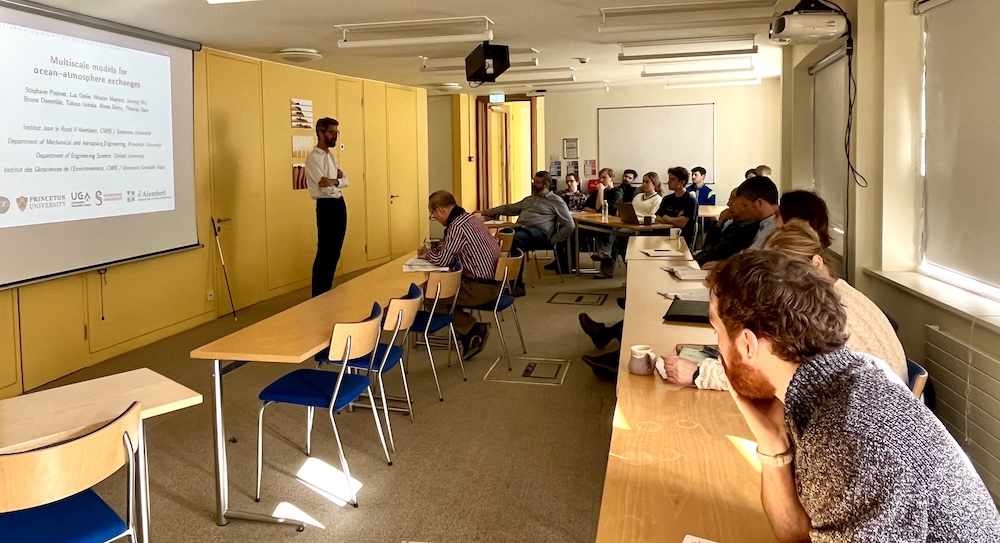Wave breaking occurs at the ocean surface at moderate to high wind speeds, with significant impacts on the transfer of momentum, energy and mass between the ocean and the atmosphere. When waves break, the water surface overturns: this generates bubbles and sea spray and largely enhances the gas exchange.
Stéphane Popinet, from the Institut d’Alembert and Sorbonne University in Paris, has been modelling the ocean-atmosphere exchanges which occur as a result of wave breaking at the surface. This involves linking microscale processes (such as the release of a single droplet of sea water from the ocean surface) to much larger-scale processes (such as the forcing which controls the ocean wave field). Hence, a broad range of fluid mechanics approaches is required.
In his modelling, professor Popinet uses a combination of numerical approaches, physical models and statistical and dimensional analysis of turbulent processes. During the seminar today, he presented numerical models for the statistics of jet drops production by a single wave breaking, and combined them with models of the number of waves breaking per unit surface in the ocean. Each of these models was compared and validated using experimental and field datasets.
Professor Popinet is also the author of Basilisk, a free, open, collaborative software program for the solution of partial differential equations on adaptive Cartesian meshes. You can find more information about Basilisk here, and read more about the professor’s work here.
